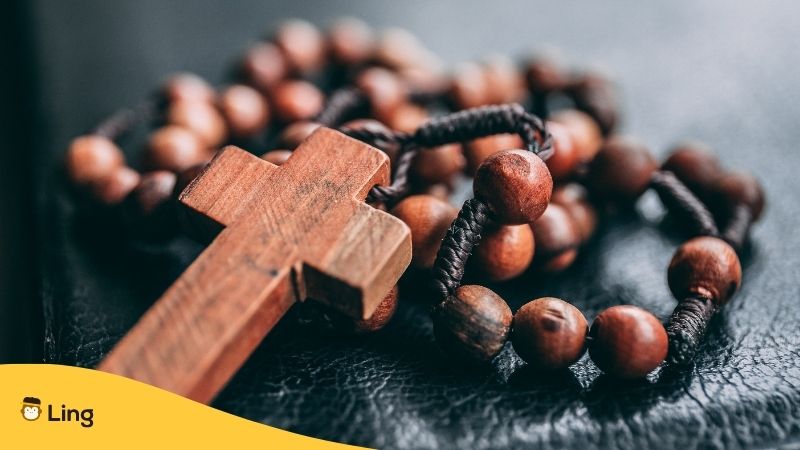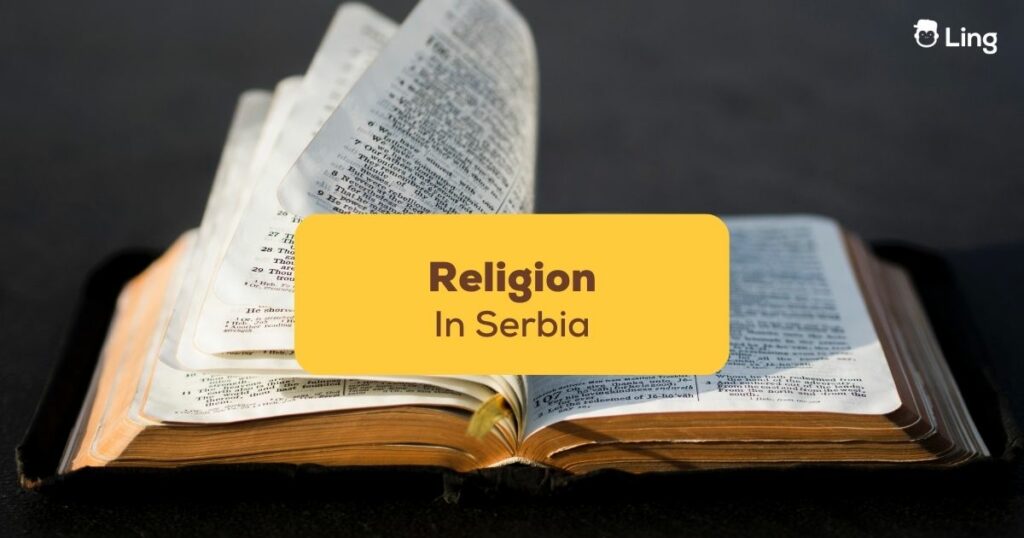Throughout its captivating past, Serbia has served as a melting pot for various belief systems, each weaving its own vibrant thread into the country’s cultural fabric. In this post, we’ll go over everything you need to know about the религија (religija) or religion in Serbia and related Serbian words. If you’re up for that and more, keep reading below!
Have you ever wondered what lies at the core of Serbia’s captivating culture? The answer to that is actually pretty simple: religion! The country’s religion is actually a gateway to understanding the country’s history, connecting with locals on a deeper level, and immersing yourself in the breathtaking beauty of sacred sites and festivals. So, are you ready to embark on a transformative journey through the spiritual heart of Serbia? Let’s dive right into it!
Religions In Serbia
Ancient Pagan Beliefs
Before the arrival of Christianity, Serbia was home to a variety of indigenous pagan beliefs. The early Slavic tribes worshipped gods and goddesses associated with nature, fertility, and celestial phenomena. Deities such as Perun (god of thunder), Veles (god of the underworld), and Mokosh (goddess of fertility) were central figures in Slavic paganism. Despite the eventual dominance of Christianity, remnants of these ancient beliefs and rituals can still be observed in Serbian folklore and traditional ceremonies.
Islam
Islam has also left a profound impact on the country, primarily due to the period of Ottoman rule. During this time, parts of present-day Serbia were part of the Ottoman Empire, resulting in the conversion of a significant number of Serbs to Islam. Today, the Muslim population in Serbia mainly consists of Bosniaks, Albanians, and Romani people.
Islam has a long history in Serbia, particularly in the region of Sandzak and the southern province of Kosovo and Metohija. The Ottoman Empire’s rule in the Balkans introduced Islam to these areas, and today, the Muslim population constitutes a significant minority. The Islamic faith has contributed to Serbia’s cultural landscape, visible through its stunning mosques and the cultural practices of the Muslim community. Historic sites like the Bajrakli Mosque in Belgrade and the Pasha’s Mosque in Prizren symbolize the religious diversity that coexists within Serbia.
Judaism
Judaism has a long and storied history in Serbia, dating back centuries. Jewish communities thrived in cities like Belgrade, Subotica, and Novi Sad before World War II. Tragically, the Holocaust and subsequent emigration significantly reduced the Jewish population. Nonetheless, Serbia preserves the memory of its Jewish heritage through historical sites like the Belgrade Synagogue and the Jewish Historical Museum. Efforts to revitalize Jewish life continue, and Serbia remains committed to preserving its multicultural and multi-religious identity.

Orthodoxy
You see, approximately 85% of the population in Serbia identifies as Serbian Orthodox Christians, making it the dominant religious affiliation. This ancient tradition, deeply rooted in the Eastern Orthodox faith, holds not only religious significance but also serves as a pillar for preserving the Serbian identity throughout the country’s tumultuous history.
From its introduction in the 9th century by Saint Naum and Clement of Ohrid, Christianity quickly became intertwined with the fabric of Serbian society. The Serbian Orthodox Church emerged as a unifying force, bringing together the nation under its spiritual guidance. No wonder why Serbia is just filled with ornate monasteries and churches!
The Monastic Tradition
Monasteries hold immense significance in Serbian Orthodoxy. These sacred sites, often nestled in picturesque locations, serve as centers of spirituality, education, and art. The monastic life has produced renowned theologians, scholars, and artists throughout history. Monasteries such as Studenica, Žiča, and Gračanica are not only architectural masterpieces but also cultural treasures that offer insights into Serbia’s rich religious heritage.
Religious Festivals And Customs
Religious festivals provide an opportunity to witness the fervent devotion and vibrant traditions of the Serbian people. Eastern Orthodox Christmas (Božić) and Eastern Orthodox Easter (Vaskrs) hold primary importance for the Eastern Orthodox Church, with elaborate ceremonies where the clergy perform religious rites, church services, and family gatherings. The Serbian Orthodox Church follows the Julian calendar in Serbia, causing a 13-day difference from the Gregorian calendar observed in the Western world. This discrepancy creates a unique blend of old and new traditions during these festivals.
Religious education is practiced in religious schools, elementary schools, and secondary schools. The classes are commonly coordinated with the Serbian Orthodox Church, the Roman Catholic Church, Protestant Churches, and the Islamic Community, allowing some semblance of unity and nominally upholding religious freedom.
Catholicism And Other Religious Minorities
While the majority of Serbian people identify as Orthodox Christians, a small minority adheres to Roman Catholicism. This religious community is predominantly found in the northern province of Vojvodina and traces its roots back to the Habsburg era when Austria-Hungary controlled the region. Additionally, Serbia is also home to members of the Slovak Evangelical Church, Judaism, the Protestant Evangelical Church, the Evangelical Christian Church, and the Reformed Christian Church.

Useful Words Related To Religion In Serbian
| English | Serbian | Transliteration |
| Religion | Религија | Religija |
| Mosque | Џамија | Džamija |
| Church | Црква | Crkva |
| Chapel | Капела | Kapela |
| Synagogue | синагога | Sinagoga |
| Allah | Алах | Alah |
| God | Бог | Bog |
| Angel | Ангел | Angel |
| Devil | ђавола | đavola |
| Worship | Обожавање | Obožavanje |
| Buddhist | будистички | Budistički |
| Muslim | муслимански | Muslimanski |
| Christian | хришћанин | Hrišćanin |
| Jewish | Јеврејин | Jevrejin |
| Spiritual | Духовне | Duhovne |
| Sacred | Сацред | Sacred |
| Holy | Свети | Sveti |
| Divine | Божанствено | Božanstveno |
Ling App: The Language App You Can Put Your Faith In
Learning a new language like Serbian is daunting. The good thing is that the Ling app takes the pressure off by teaching at a pace that suits you with plenty of games and quizzes to keep things fun and lighthearted. Our courses are made by native speakers who understand how to provide you with all the tools that will have you speaking like a native in no time. Give Ling app a go today by visiting Google Play or App Store.

































































